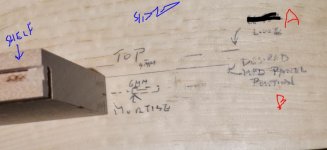Hello!
Just got a Domiplate and it is so far so good. Seems great for stuff like face frames. However, I am a little confused by how it would be used to create a butt joint in the middle of a board.
One method I have seen (not Domiplate specific) is to "open the joint like a book', so that the board being joined in the center (lets call it a Shelf) is laying flat on top of the other board, half its own thickness away from the centerline, and it then serves as a fence for the vertical cut. This works great. However, with the Domiplate out of play, the vertical cut may no longer be centered, correct? How does one calculate where to place the tool/clamp the shelf? Would it just be half of the material's thickness (aka 1/4") away from the center line?
I am probably overthinking this, but am relatively new to the Domino.
Thank you!
Just got a Domiplate and it is so far so good. Seems great for stuff like face frames. However, I am a little confused by how it would be used to create a butt joint in the middle of a board.
One method I have seen (not Domiplate specific) is to "open the joint like a book', so that the board being joined in the center (lets call it a Shelf) is laying flat on top of the other board, half its own thickness away from the centerline, and it then serves as a fence for the vertical cut. This works great. However, with the Domiplate out of play, the vertical cut may no longer be centered, correct? How does one calculate where to place the tool/clamp the shelf? Would it just be half of the material's thickness (aka 1/4") away from the center line?
I am probably overthinking this, but am relatively new to the Domino.
Thank you!

